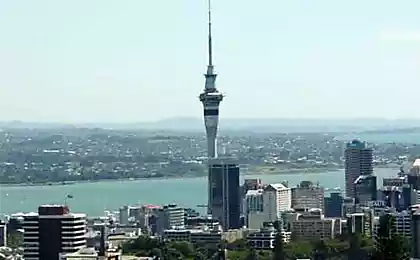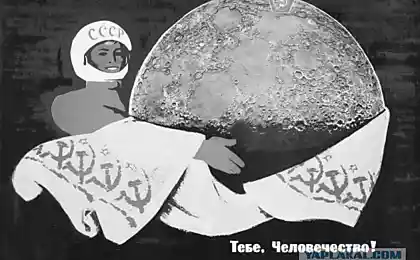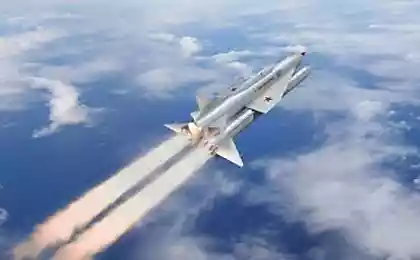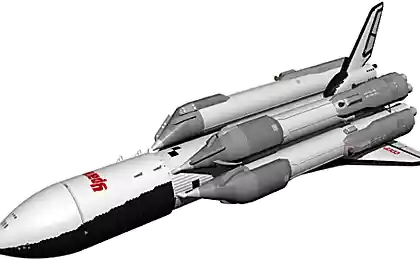567
Will we have to say goodbye to the dream of space elevators?

Elevators that can transport people and cargo from the planet's surface into space, can mean an end to polluting space missiles. But to make this lift extremely difficult. The concept of a space Elevator has been known a long time ago and introduced Konstantin Eduardovich Tsiolkovsky, but since then we have even one iota closer to a practical embodiment of such a mechanism. Elon Musk tweeted recently wrote: "And please don't ask me about space elevators until we grow carbon nanotubes, a length of at least a meter".
Elon Musk is considered by many to be a visionary of our time — a pioneer of private exploration of outer space and the man behind the idea of Hyperloop transport system capable of transporting people from Los Angeles to San Francisco in a metal tube in only 35 minutes. But there are some ideas that even he considers too far-fetched. Including a space Elevator.
"It's incredibly difficult. I don't think building a space Elevator is a realistic idea," said Musk during a conference at MIT last October, adding that it would be easier to build a bridge from Los Angeles to Tokyo, the Elevator, which will be able to take materials into space.
Sending people and payloads into space in capsules, which stretch along a giant cable held in place by Earth's rotation, was shown in works of science fiction like Arthur C. Clarke, but hardly seemed appropriate in the real world. So, we deceive ourselves, and our abilities are not enough to solve the complex technical task?
Proponents of space elevators believe that enough. They think chemical rockets are obsolete, risky, harmful to the environment and devouring the finances. Their alternative is essentially a railway line into space, run on electricity spacecraft moving from the anchor on the Ground on a heavy-duty rope connected with the counterweight in geostationary orbit around the planet. After the commissioning of the space elevators could deliver a payload into space for $ 500 per kilogram, which is incomparable with $ 20 000 per kilo at current rates.
"This phenomenally effective technology could open the Solar system for humanity, says Peter Swan, President, International space Elevator consortium. — I think the first lifts will be robotic, and in 10-15 years we'll do six to eight elevators that are sufficiently safe and in order to carry people".
Victorian корни

Some scientists believe that the cable for the space Elevator can be done — and it will become a reality during this century. A major Japanese construction company has promised to create it by 2050. American researchers recently developed diamond-like material made of nanofibers, also believe that the cable for the space Elevator will appear before the end of the century.
Modern ideas of the space Elevator is rooted in 1895, when Konstantin Tsiolkovsky was inspired by the newly built Eiffel tower in Paris and calculated the physics of building construction, passing into space, so spacecraft could launch from orbit without rockets. In the novel of Arthur C. Clarke's 1979 "the Fountains of Paradise" the main character builds a space Elevator with a similar design, we present today.
But how to translate it into reality? "I like the shock value of this idea, says Kevin Fong, founder of the Center for altitude, space and extreme medicine at University College London. — I can understand why people like this idea, because if you could get to low earth orbit cheap and safe, very soon the inner Solar system would be at your disposal."
Questions безопасности
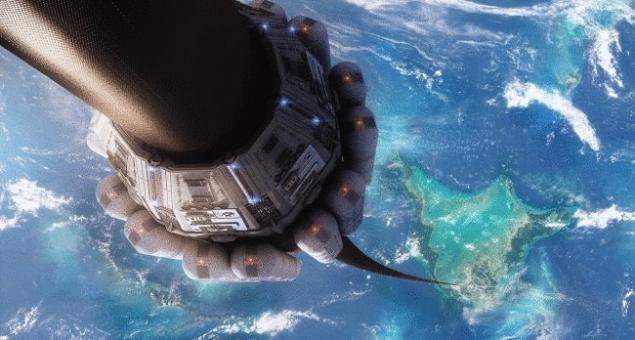
The stumbling block lies in how to build such a system. "For a start, it must be created from a not yet existing but durable and flexible material with the desired mass and density characteristics to support the vehicle and withstand incredible external forces, says Fong. — I think all of this will require the most ambitious orbital missions and space walks on low and high earth orbits in the history of our species".
There are also security issues, he adds. "Even if we could solve the significant technical difficulties associated with the construction of such a thing, emerges a terrible picture of the giant cheese with holes punched in all this space junk and debris up there."
Over the last 12 years was presented three detailed working of the project. First published by brad Edwards and Eric Vestling in the book of 2003 "Space elevators", foresaw the transportation of 20 tons of payload with a diet based on terrestrial laser at a price of 150 dollars per kilogram and the cost of the overall construction of $ 6 billion.
Taking this concept as a basis, design the International Association of astronauts in 2013 have already secured the cockpit protection from the weather for the first 40 miles and then equip it with solar panels. Transportation this plan costs $ 500 per kilogram, and the construction of the whole structure — $ 13 billion for the first project (more is always cheaper).
These proposals include a counterweight in the form of a captured asteroid in Earth orbit. Report of the MAA indicates that once this item may be possible, but not in the near future.
Floating acarbose this, part, weighing 1,900 tons, which should support the cable weight at 6300 tons, can be assembled from spacecraft and transport, who delivered the cable in space. She also will be supplemented by captured by satellites, which have ceased to function and left to dangle in orbit as space debris.
The report's authors add that the counterweight should be able to withstand radiation, small meteorites impacts and temperature extremes.
They also offered to submit to an anchor on the Ground, a floating platform the size of a large tanker or aircraft carrier near the equator, as this would increase its capacity. The preferred location is the point in 1000 kilometres West of the Galapagos Islands: hurricanes, typhoons and tornadoes are considered rare.
Corporation "Obayashi", one of the five largest construction companies in Japan, last year presented plans for the resettlement of more reliable space Elevator, carrying a robotic cart equipped with maliniemi engines like those used on high-speed train tracks. They could carry people with the required strength of the cable. This design will cost $ 100 billion according to preliminary calculations, but transporting will cost you 50-100 dollars per kilogram.
Although obstacles, of course, a lot, a single component, without which the construction of the space Elevator would be impossible today, is the cable itself, says Swan.
"Find material from which to make rope, this is the main technological problem, he says. All the rest is nonsense. We are able to do it all".
Diamond тросы
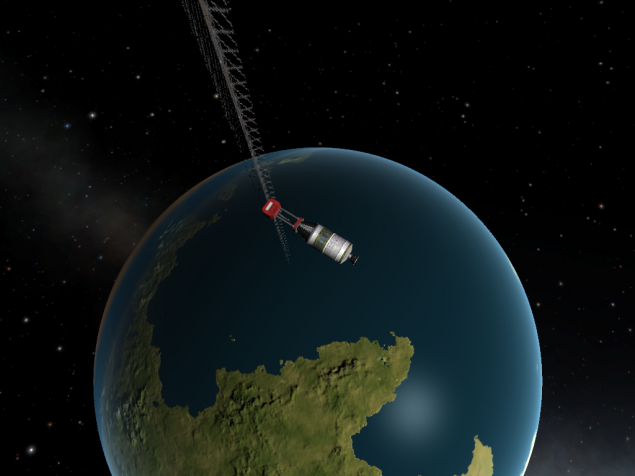
The leading contender is a cable made of carbon nanotubes that were created in a lab with a tensile tensile strength of 63 gigapascal is 13 times stronger than the best steel.
The maximum length of carbon nanotubes has been steadily growing since their discovery in 1991. In 2013, Chinese scientists have already reached half a meter in length. The authors of the report, MAA portend the length of the cable made of carbon nanotubes per kilometre by 2022, and by 2030 — necessary for the production of the space Elevator.
Meanwhile, in September, was presented a new contender for the space tether. The team under the leadership of John Budding, a chemistry Professor at the University of Pennsylvania, published a paper in Nature, which said that he had created an ultra-thin diamond nanofibers, which can be stronger and harder than carbon nanotubes.
The team began with compression of benzene atmospheric pressure of 200 000 atmospheres. When the pressure is then slowly released, the atoms were perishability in a new, highly ordered structure similar to a tetrahedron.
These forms associated together to form ultrafine nanofibers that are extremely similar in structure to diamond. Although it is not yet possible to measure their strength directly because of their size, theoretical calculations have shown that fiber can be stronger and tougher than the most durable synthetic materials of today.
Risk mitigation"If we could learn to make materials based on diamond nanowires or carbon nanotubes are long enough and high-quality, science tells us that we could begin construction of the space Elevator immediately," says Badding.But even if one of these materials proved to be quite durable, Assembly and installation of the individual elements of the space Elevator remains a very problematic event. Other headaches will include safety, Assembly tools, satisfying the interests of competing parties, and T. p. Swan, at least, is not scary.
"Of course, there will be serious problems as those who built the first transcontinental railroad, the Panama and Suez canals, he says. — It will take a lot of time and money, but, as with all great enterprises, to cope with obstacles have only once".
Even Musk can't bring himself to discredit the idea. "This is clearly not something you can talk now,' he said. But if someone persuaded me it would be great." published
Source: hi-news.ru
